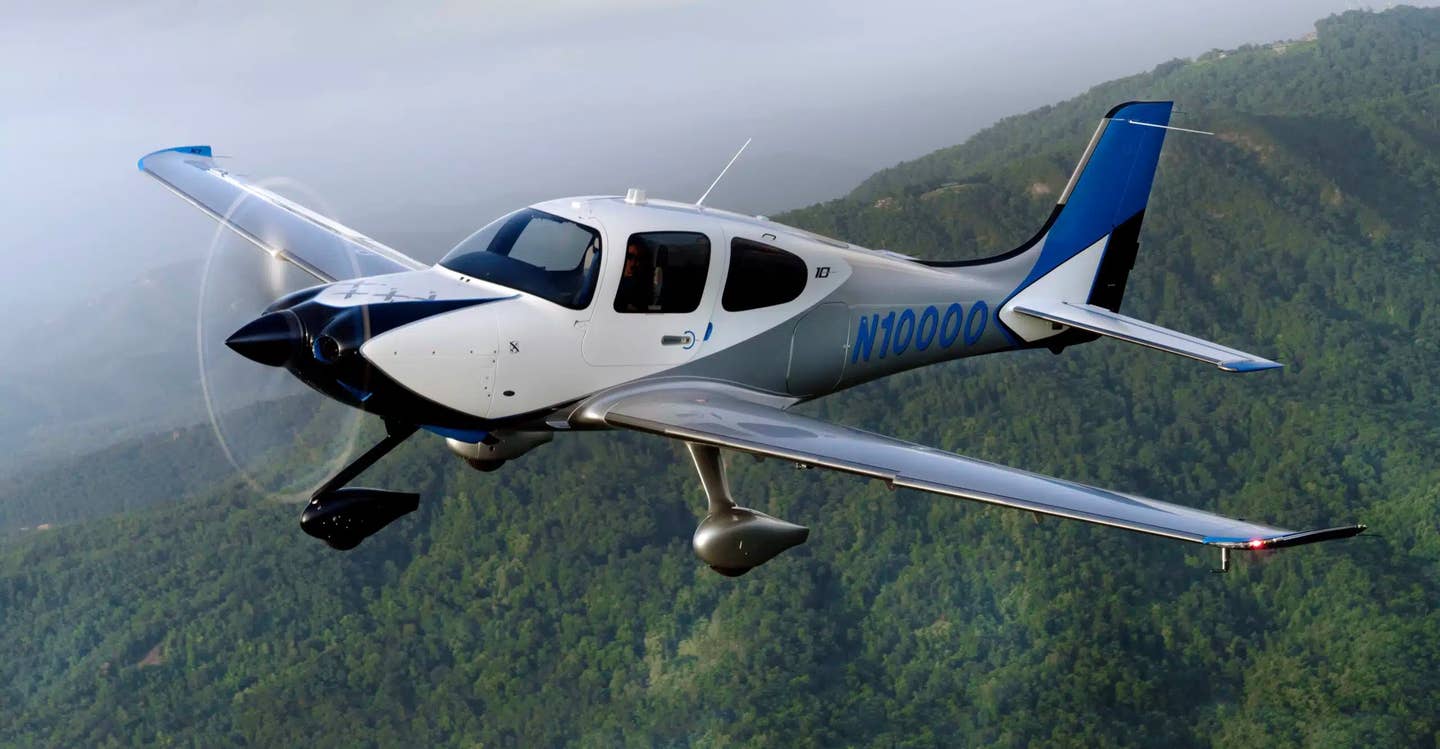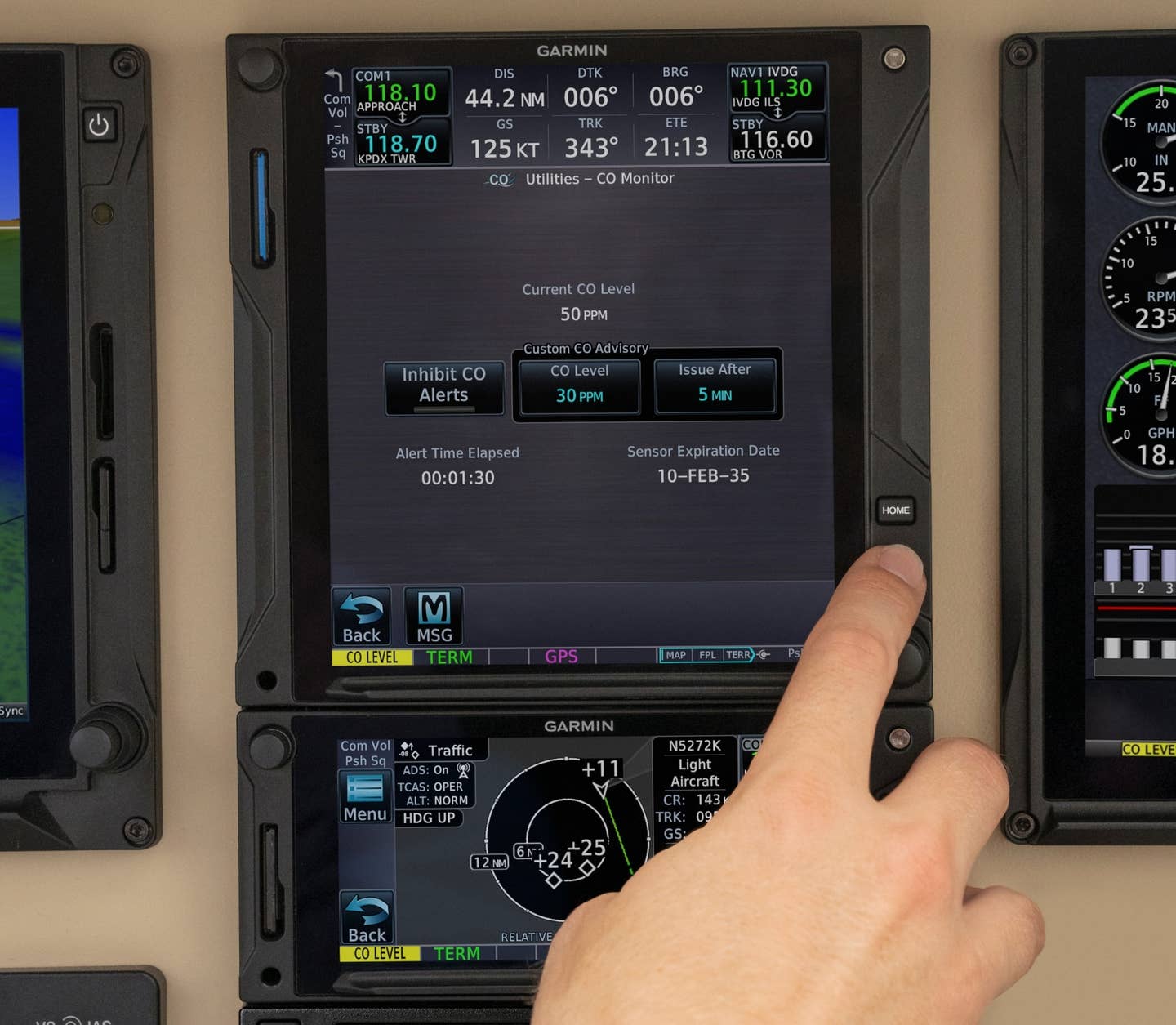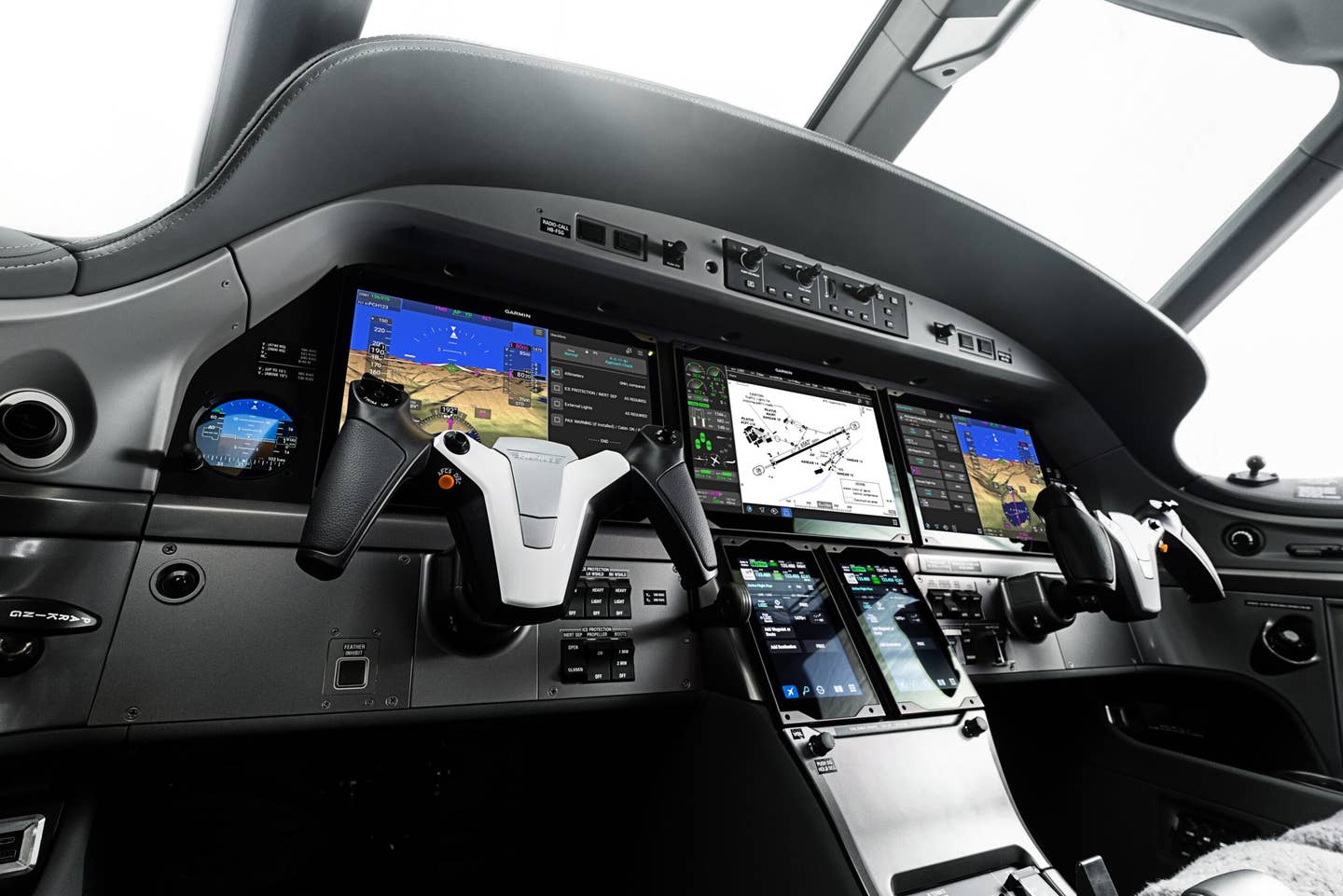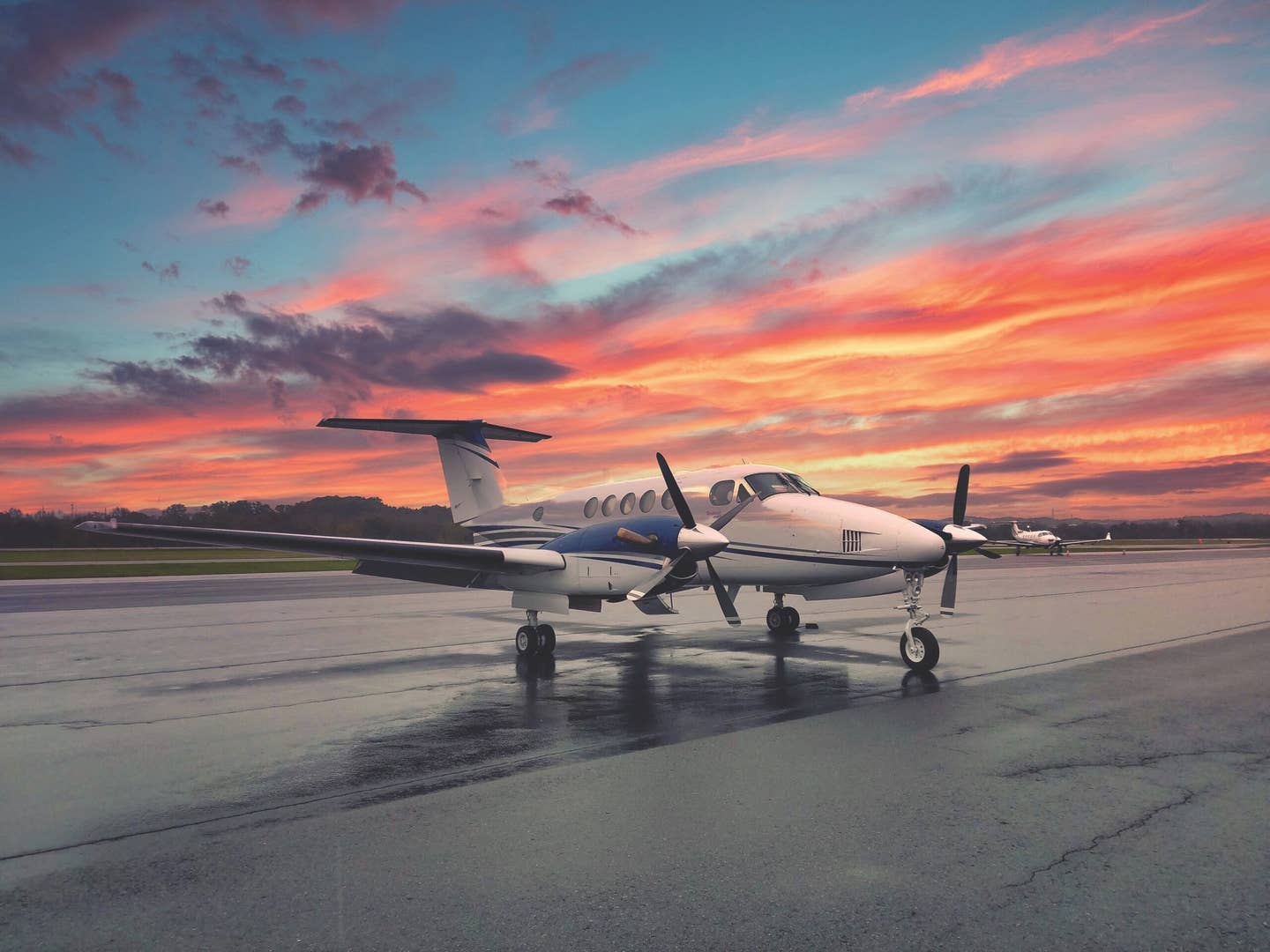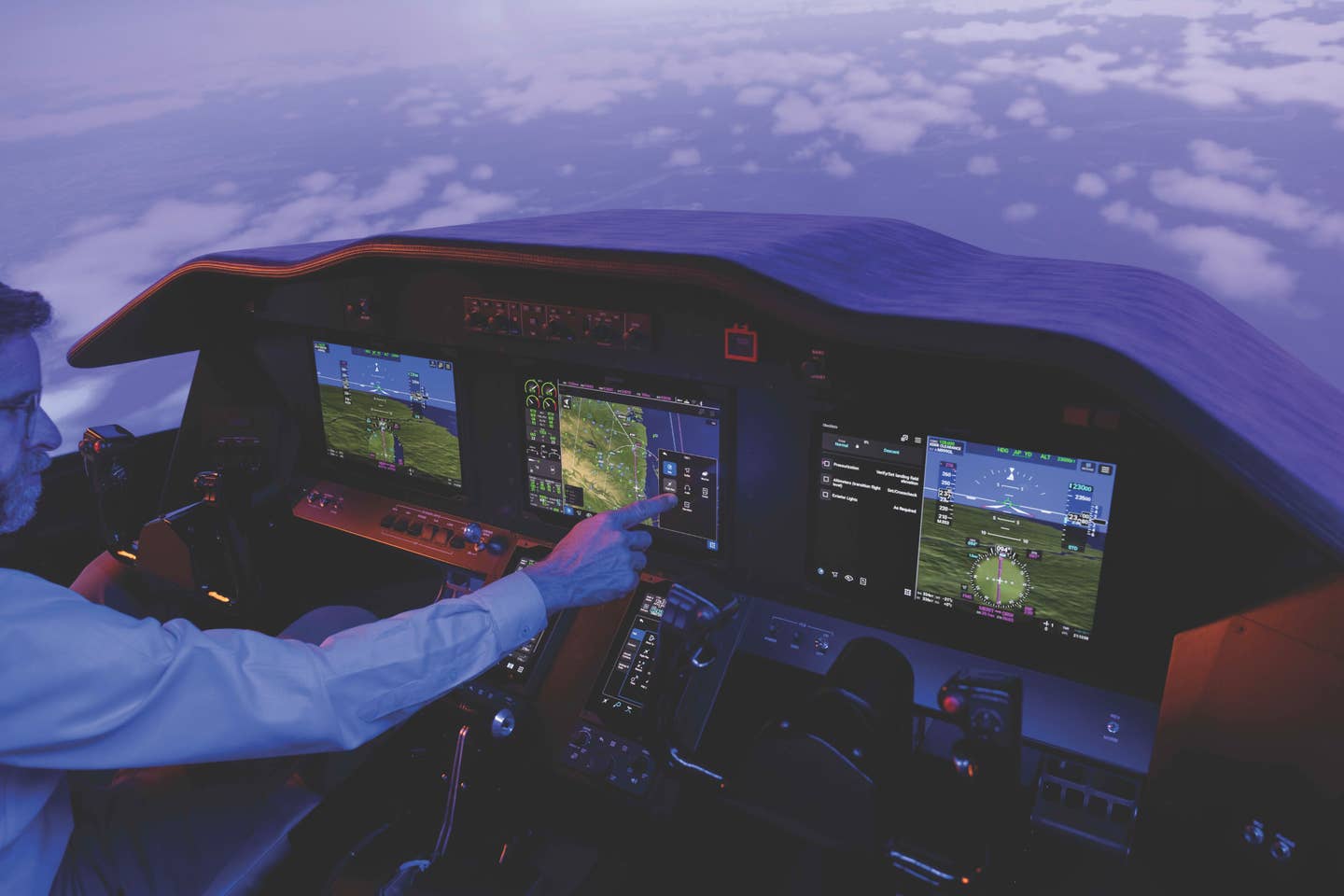
The Aspen Avionics E1000 Evolution will take the primary position in the instrument panel of the PAL-V Liberty. Aspen Avionics
Aspen Avionics announced that its Evolution E1000 has been selected as the flight deck avionics suite for the PAL-V flying car. The PAL-V has road certification in Europe already, and has finalized its full certification basis under EASA as of February this year. The next phase is the compliance demonstration—during which the PAL-V Liberty will satisfy the agreed-upon criteria with EASA.
When the road to certification began in 2009, PAL-V made an agreement with EASA to utilize the existing Certification Specifications for Small Rotorcraft, CS-27, with the adoption of roughly 1,500 criteria in order to make it apply to the Liberty. The updated standards, were published in 2020 for a peer review, with the final iteration published in February 2021. Cees Borsboom, head of airworthiness for PAL-V, commented on the process. “The sign-off of 1,500 requirements already in 2012, before starting manned test flights, was the beginning,” said Borsboom in a press release. “The development of the requirements started in 2009. More than 10 years of analysis, test data, flight tests, and drive tests, led to this important milestone. In parallel, we already started compliance demonstration to obtain the type certificate, which will be followed by delivery of vehicles to our customers.”
“Getting a flying car to the market is hard. It takes at least 10 years,” said Robert Dingemanse, PAL-V’s CEO, summing up what a legacy of would-be aircraft manufacturers have found before. “Although we are experienced entrepreneurs, we learned that in aviation everything is exponentially stricter. Next to the aircraft, all aspects of the organization, including suppliers and maintenance parties must be certified.”
That led to the recent announcement by Aspen Avionics, including the E1000 Evolution now amongst those certified elements. “We designed the Evolution product display over 15 years ago to be the most flexible and affordable electronic flight instrument system in the general aviation marketplace,” said Cory Relling, international regional sales manager, Aspen Avionics. “With over 20,000 displays installed worldwide, we never imagined that an Aspen primary flight display would be among those installations in the first commercial flying car.”
“Aspen Avionics has been a trusted partner in the development of the PAL-V Liberty flying car,” said Jeroen van de Braak, supply chain manager at PAL-V. “Over the 10-year journey of design and flight testing, we were determined to install systems that have a proven track record; with equipment that is easy to operate and companies that share our determination of safety as a key factor in PAL-V’s development. Aspen Avionics checked all the boxes.”
The EASA validation and eventual type certification will be valid for operations in 80 percent of the world market, including the US and China.

Sign-up for newsletters & special offers!
Get the latest FLYING stories & special offers delivered directly to your inbox

